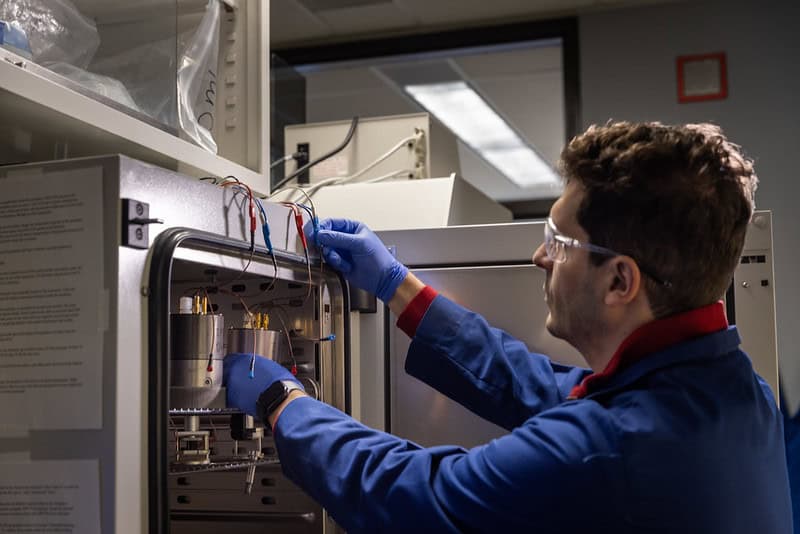
A Sample of Kamcev Lab Research Projects
Two researchers from the Kamcev lab share details of a few of their critical research projects.

Two researchers from the Kamcev lab share details of a few of their critical research projects.

Project 1: Modeling and overcoming trade-offs in electrochemical desalination
Graduate research by David Kitto, Postdoctoral Research Fellow
Engineering problems are typically constrained such that no solution will be perfect. In membrane science, this famously manifests as a “permeability-selectivity trade-off”: when designing a membrane to separate two molecules, the faster you perform the separation, the lower the purity of your product. It is up to engineers to determine what the tolerance for impurities is and how costly it is to slow down this separation, ultimately landing at a design constraint: it will make economic sense to slow down production by 1% if that change can improve the purity by some solved-for X%.
In our lab, recent modeling efforts have sought to design around this question. We assembled a thermodynamic transport model to describe the trade-off between ion permeability and ion selectivity in ion-selective membranes. By taking into account the molecular structure of membranes currently on the market, we demonstrated that a relatively simple equation can describe the best possible combinations of permeability and selectivity. Having an equation describe what is actually possible with current materials allows the optimization question raised above to be answered with precision and enables efficient operation. Our model also goes further, prescribing structures for new materials that will allow for better combinations of ion transport properties. With guidance from this model, we designed membranes with record high combinations of permeabilities and selectivities.

Project 2: Finding leverage in resource recovery
Graduate research by David Kitto, Postdoctoral Research Fellow
Isolating ions from mixtures of very similar chemical species is essential for managing resources in natural water and industrial wastewater. While membranes are able to differentiate between many different ions based on how charged they are or how large they are, one important type of separation remains particularly difficult. Distinguishing between two singly-charged ions with the same sign (for example, cations sodium and lithium, or anions chloride and nitrate) is difficult using the traditional separation mechanisms. This type of separation is increasingly necessary (to address problems in the lithium supply chain and environmental fertilizer contamination, respectively), prompting a search for a distinguishing feature between these pairs of similar ions.
Our lab is rising to this challenge by performing a multifaceted investigation into how ions transport through model membranes. We’ve discovered interactions that impact transport of monovalent cations in negatively charged membranes and used advanced x-ray techniques to probe the hydration environment around ions in membranes. In recent unpublished work, we combined rigorous experimental results with detailed simulations that let us look at molecular interactions inside of our membranes. We found that if we can tune our membrane to bind water molecules in the same manner as our ion of interest, we can slow that ion down. Continued work in our lab is testing how far we can push this design principle towards a real solution to these challenging ion separations.

Project 3: Novel anion exchange membranes for renewable energy storage and generation devices
Graduate research by Nathan Bryant, PhD Candidate
Our lab is working towards creating novel anion-exchange membranes for renewable energy storage and generation devices. Electrochemical technologies, like water electrolyzers and fuel cells, can operate with zero carbon emissions when coupled with renewable energy sources such as wind and solar. However, future implementation of these devices is limited by efficiency, longevity, and capital costs of their individual components (electrodes and membranes) and the optimization of their interfaces. Our work focuses on improving the membrane, a critical component that regulates the transport of electrochemical species within the device that completes the electrical circuit. We hypothesize that through membrane design, we will be able to make these devices more efficient, consuming less electricity. In my work, I follow our group’s recently published molecular design principles of creating membranes with ultrahigh charge densities to maximize the membrane’s ionic conductivity, reducing ohmic losses and boosting overall device efficiency. Importantly, I am also focused on increasing the lifetime of the membrane to further promote practical implementation of our research. I am very excited to be working on the cutting edge of understanding transport within ion exchange materials, and I am grateful to be working on this project alongside an incredibly talented team.